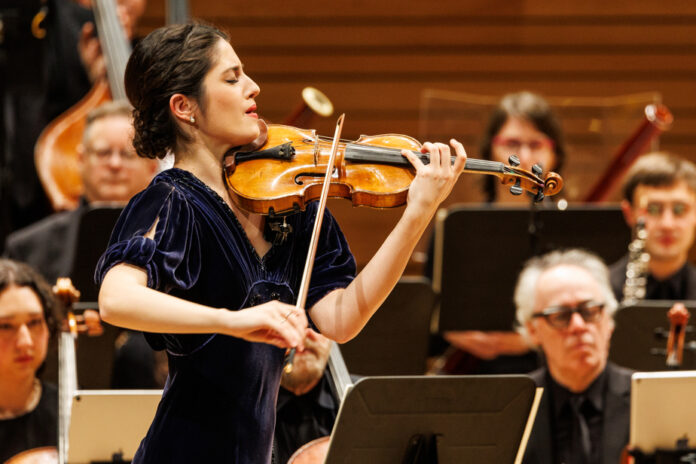The Orchester Métropolitain and its conductor Yannick-Nézet Séguin gave a moving concert at the Maison symphonique on Saturday evening, offering a Soviet symphonic monument and a concerto which has everything to become a lasting part of the repertoire.
Exceptionally (and comfortingly), the fourth program of the OM season was presented to a sold-out crowd, both on Friday at the Maison de la culture in Ahuntsic and on Saturday at Place des Arts. Surprising for a concert presenting an unknown concerto and a long and demanding symphony.
The life leader of the orchestra definitely has an aura that allows for all daring. Like reminding listeners, at the start of the second part, to cough more discreetly, even if the pandemic is, so to speak, over.
If this goes without saying in normal times, it was even more the case on Saturday, with the presence of cameras and microphones, which immortalized the performance for the Stage channel of Deutsche Grammophon, but also for the documentary Opus 28 by the Canadian Sofia Bohdanowicz on the rediscovery of the Violin Concerto, Op. 28, by Johan Halvorsen (1864-1935).
Yannick Nézet-Séguin recalled the astonishing circumstances surrounding this find. It was after hearing the Alberta violin prodigy Kathleen Parlow (1890-1963) play in Oslo in 1908 that the Norwegian, himself a virtuoso violinist, decided to compose a concerto for her, which she premiered in the Netherlands to the following year.
Despite the enthusiastic reception from the public and critics, the concerto was put in a drawer and probably burned by the composer at the end of his life. We owe its conservation to the dedicatee, who buried it in her archives until its rediscovery in 2015 in Toronto. The work has since been the subject of at least two recordings.
New Deutsche Grammophon darling, the young Andalusian violinist María Dueñas has given herself body and soul to this athletic score of just over 20 minutes. From the dazzling initial cadence, it captivates us with its eloquence and its royal sound. Both the bass and the treble are admirably projected and of undeniable richness.
As an encore, the musician performed Veslemøy’s Song, which Halvorsen had transcribed for violin and orchestra for Parlow.
Complete change of atmosphere after the intermission with Symphony No. 7 in C major, known as “Leningrad”, by Shostakovich, which Yannick Nézet-Séguin conducted at the Lanaudière Festival five years ago.
As he had promised at the start of the second part, the Maison symphonique was entitled to its share of decibels, with the fortississimo section of the first movement, of great power both in terms of dynamics and expression. .
The Montreal conductor managed to maintain a real dramaturgy in this work of approximately 80 minutes which has, as he also recalled, its share of – deliberately – dead time.
All the desks had their moments of glory and they came away with all the honors.
The strong audience reaction at the end lived up to such an achievement.















